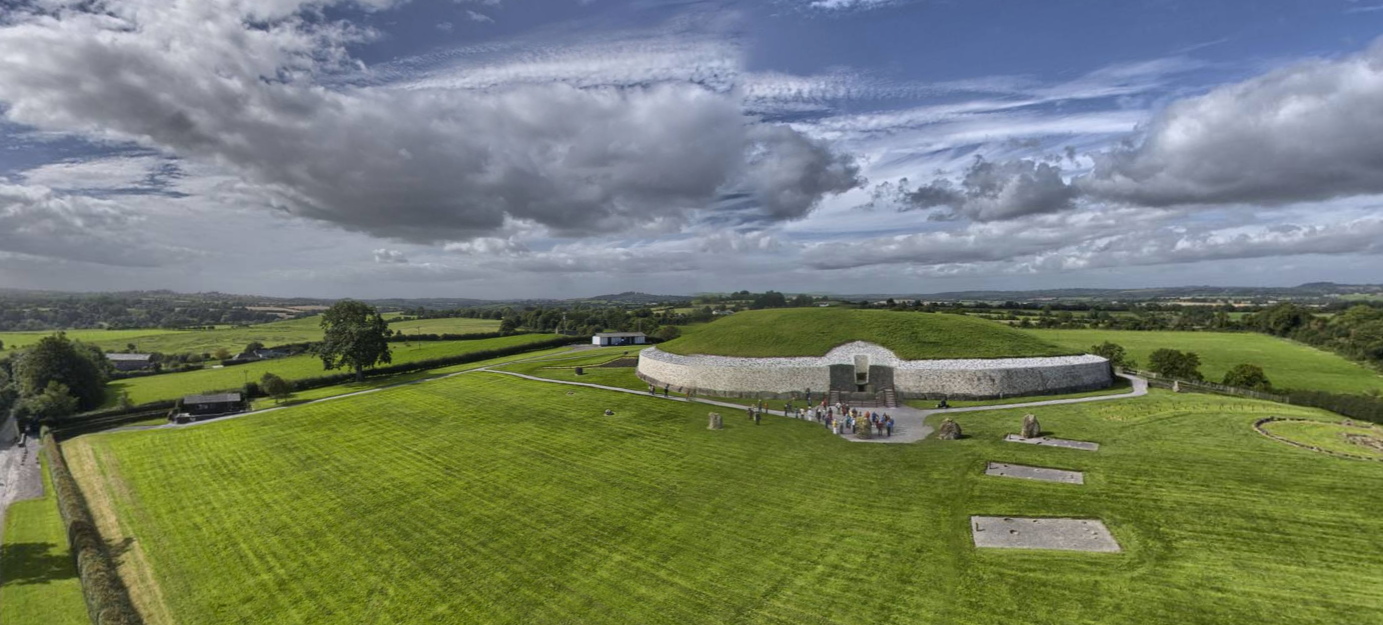In my visit to the ruins at Newgrange I discovered a lovely site surrounded by lush grass and green hills. The ruins, which were built hundreds of years before Stonehenge or the Great Pyramids, date to the Neolithic period in Ireland. The ruins are a huge stone structure made of local rock and white quartz which glints in the sun, with a pathway leading up from the grassy hills and nearby farmland. The burial site begins with an entry stone carved with swirling runes, their meaning lost to time. Since its rediscovery, historians have speculated on the ruins’ purpose or significance. Eventually, by studying the sloping floors within the chamber, and the different axis of the Earth in the era of its construction, they came to a startling conclusion: that the structure directly links to the path of the sun during the winter solstice. At this time, the rays of light flood nearly the whole chamber, and once would have reached back to a smaller anteroom, highlighting the white quartz, possibly once considered sacred. Newgrange is most likely a ceremonial ground, where rituals and cremations took place, and standing within the chamber, tilting my head back to gaze around the ceilings and the walls, I was truly in awe of the rich spirit permeating the entire space.
Sir Thomas Molyneux describes how explorers to the newly opened historical site found two whole bodies, lying intertwined upon the floor. A couple, he presumes, resting in death as they lived, wrapped in one another’s arms. Yet, Edward Lhywd notes it seeing not bodies but mere bones. As Voicesfromthedawn asks, “How did Molyneux see intact skeletons where the very meticulous Edward Lhwyd saw only scattered bones?” This brought to mind the lines of Eavan Boland’s “That the Science of Cartography Is Limited–,” a poem which describes the author’s experiences on a Famine Road. She describes how a two-dimensional map cannot capture the experience of being in the forest, nor the historical significance of the famine road, even if it were to represent it on the map because its overgrown stones encompass much more than just a path which ends abruptly; it holds the memories of the poor and starving who died in its construction. Just as different stories can come from viewing one structure, so can a woodland hold multiple experiences and histories. Boland characterizes this road as “the line which says woodland and cries hunger,” similarly to how I feel Newgrange holds a character and personality of its own, a presence of all those who worshipped in its walls. Yet while the Famine Roads tell hidden tales to those who listen, Newgrange keeps some secrets from her curious observers to this day. Even if we never know the entire story behind the monument, the experience was an enlightening and beautiful one!


I also thought about “That the Science of Cartography Is Limited” while looking at the site! I definitely agree that this monument is such a prime example of the fact that this building’s essence cannot be felt through cartography alone. I also wholeheartedly agree that open interpretation of the site is one of its great appeals, as shown in your example given of the bones that were seen differently by two people during its exploration.